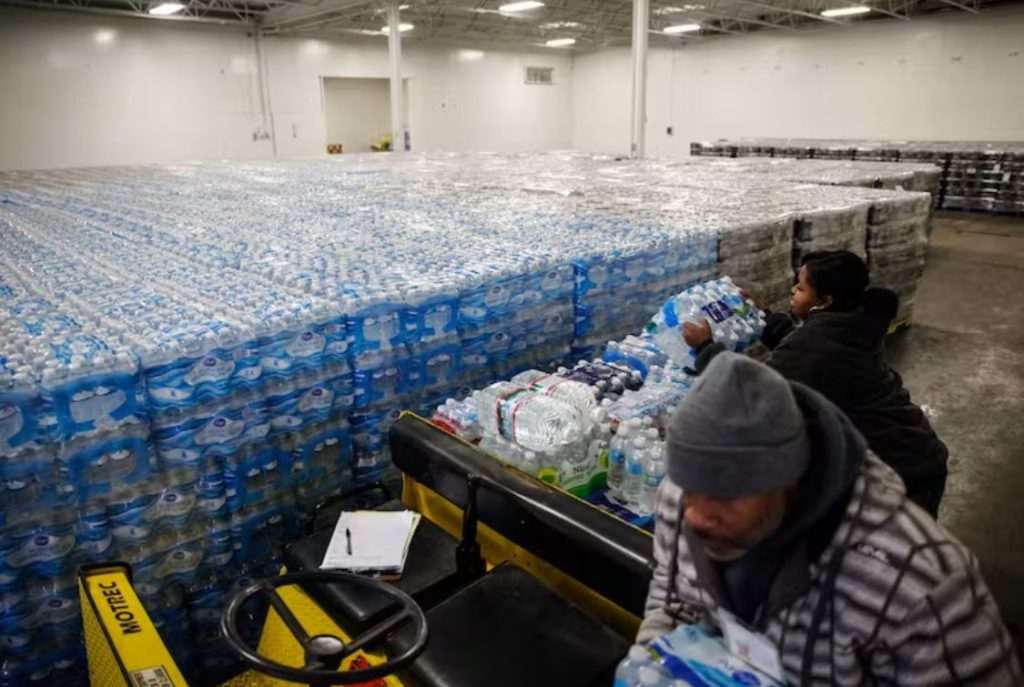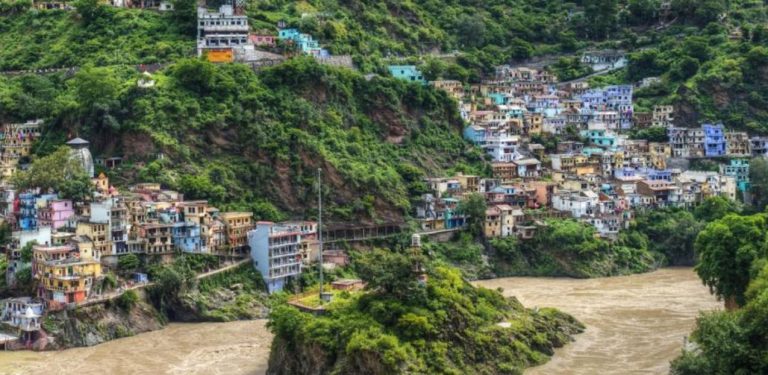Daniel Jaffee, Portland State University
A massive intrusion of salt water into the Mississippi River has left the tap water in several Louisiana communities unsafe to drink and could threaten the New Orleans metropolitan area. The most visible emergency response is the provision of bottled water, with authorities distributing huge quantities of single-serving plastic water bottles to residents.
These pallets of water are an increasingly familiar sight in the U.S. They have become the default response not only to natural disasters but to a series of human-made emergencies – from the crises of unsafe tap water in Flint, Michigan, and Jackson, Mississippi, to contaminated groundwater in towns in California’s Central Valley. What these places also have in common is that their residents are disproportionately low-income and nonwhite.
In such communities, public officials and charitable donors often present bottled water as a stopgap solution, to be used only until the immediate crisis is resolved. But in practice, bottled water often becomes a long-term substitute for compromised tap-water supplies.
As a sociologist, I study the social and environmental effects of the rapid growth of bottled-water consumption in the U.S. and beyond, and how it is linked to distrust of public tap water. In my new book, “Unbottled,” one chapter examines how these dynamics played out in Flint. As its example shows, communities can end up relying on bottled water – often at great expense – for years after a crisis.
Seven years of bottled water
In Flint, after the toxic lead and bacterial contamination of the city’s water system was revealed in 2015, residents demanded – and received – access to free bottled water as an emergency measure. Over the next seven years, they wound up consuming hundreds of millions of bottles.
While local activists and Michigan’s governor sought a federal disaster declaration that would have facilitated bulk tanker deliveries of safe water, that request was denied, and bottled water remained the sole alternative water source on offer until free distribution ended in December 2022.
Although most lead service lines in Flint have been replaced and officials claim the water is safe to drink, damaged pipes and appliances remain in some homes. Many residents continue to distrust their tap water, and many of them rely on purchased bottled water for their drinking, cooking and other needs.
They are not alone. Studies and opinion polls show that low-income, Black and Latino households distrust their tap water more – and consume more bottled water – than white and middle- or upper-income households. These differences have continued to widen since the Flint disaster.
This isn’t a coincidence. While the vast majority of tap water in the U.S. meets all safety standards – only 7% to 8% of U.S. water systems experience any health-related violations of the Safe Drinking Water Act in an average year – these problems disproportionately affect low-income communities, particularly those with high proportions of Black and Latino residents. Towns from Illinois to California, and schools in Newark, Baltimore and other cities, have been dependent on bottled water for years.
Bottling up water problems won’t fix them
In the aftermath of water-quality crises, it’s fair to ask: What’s wrong with just replacing tap water with bottled water?
For one thing, buying enough packaged water to meet a family’s full drinking and cooking needs costs thousands of dollars a year. That’s to say nothing of bottled water’s far greater waste, energy and overall environmental footprints.
What’s more, in economically stressed communities with drinking-water problems, the ready availability of bottled water can reduce the pressure on local or state officials to make hard political decisions, such as raising taxes to pay for system repairs. It is easier to let individuals assume the burden.
Yet this isn’t a real solution. One Flint resident I interviewed described bottled water’s role in the disaster as “a triage kind of thing. … It’s just something to hold us captive, basically, until we figure this out. But there was nothing to figure out – fix the damn pipes and the infrastructure, and we won’t need this bottled water.”
In these settings, long-term dependence on bottled water is not just a sign of water insecurity – it also worsens economic and racial inequality. Bottled water’s far higher costs are being borne by those least able to afford them, on top of water bills that are rising fast.
Ending a five-decade funding drought
All of these local water crises are less surprising when you consider that federal spending on public water infrastructure fell by 77% in real terms between 1977 and 2017. This nearly five-decade disinvestment trend has forced cities and states to shoulder most of the costs of maintenance and capital improvements.
Many have delayed making repairs. The unfunded water infrastructure investment gap is estimated at $109 billion per year. As a result, the average age of U.S. water pipes rose from 25 years in 1970 to 45 years in 2020. The bottled-water industry sees crumbling U.S. water infrastructure and growing distrust in tap water as a major market opportunity.
I believe that the only way to truly solve these connected problems – deteriorating public water systems, growing distrust of tap water, and long-term dependence on bottled water – is for the federal government to reinvest in water infrastructure in a big way.
Recently, lawmakers have begun taking steps in the right direction. In 2021, Congress passed major investments in public water systems – both a $35 billion water infrastructure funding bill and the bipartisan infrastructure bill, which allocated $55 billion for water systems. While that alone isn’t nearly enough to resolve the nation’s drinking-water problems, it does show that reinvestment in public water infrastructure is politically possible.
One such proposal in the current Congress is the WATER Act, which would allocate $35 billion annually to a permanent federal trust fund to improve water systems across the country – prioritizing disadvantaged communities – and address the crisis of water affordability.
While $35 billion is not a small sum, it’s less than the $46 billion Americans spent in 2022 to buy bottled water.
Daniel Jaffee, Associate Professor of Sociology, Portland State University
This article is republished from The Conversation under a Creative Commons license. Read the original article.




